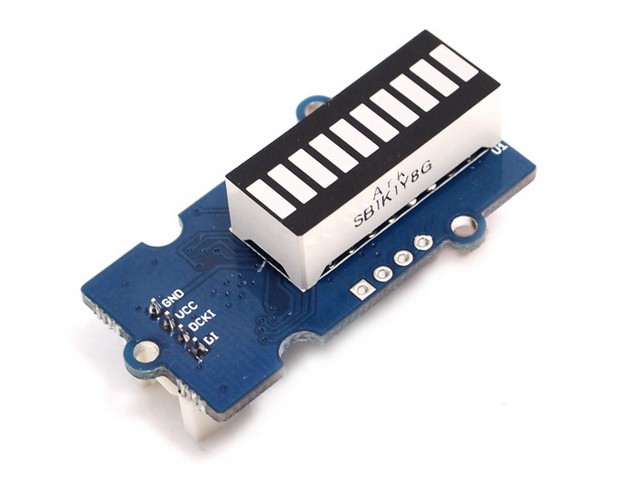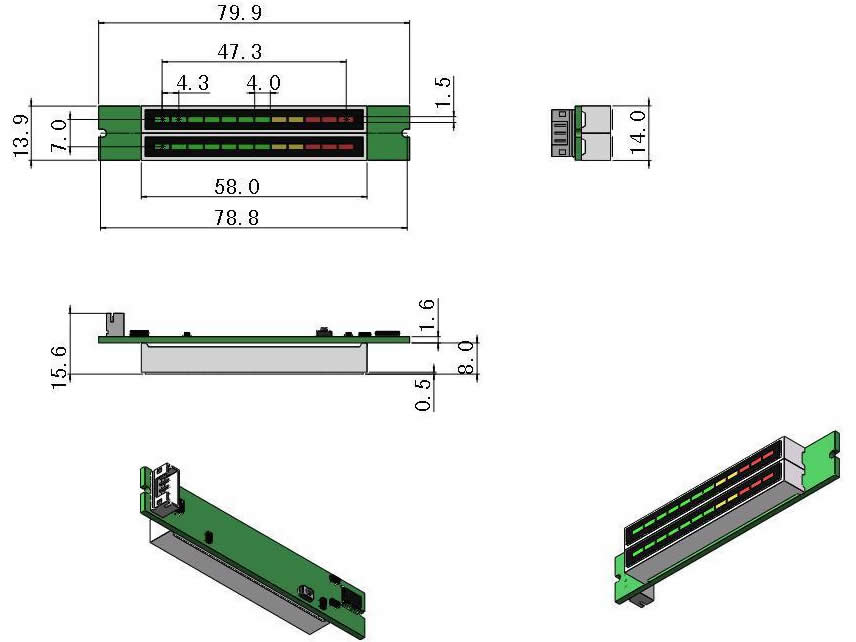

So a smaller signal voltage is required to turn on the first LED in comparison to any of the following. To turn an LED on - meaning the comparator's output is 0 - the analog signal voltage must be greater than the divided input on a comparator. The + voltage on the first comparator will be the divider input voltage (R HI − R LO), while the + voltage on the last comparator is 1/10 th of that voltage. The non-inverting (+) inputs of the comparators are connected to a string of 1kΩ resistors, which create larger-and-larger voltage dividers. Inside the chip, the analog control signal from pin 5 is connected to each of the inverting (−) inputs on the comparators. The input/output combinations of a comparator. If a resistor (R L) is connected from that pin to ground, the current flowing through each LED will be about equal to this equation: The current drawn out of the Ref Out pin (pin 7) sets the current that flows through each LED, so this pin can be used to adjust the LED brightness. These two pins can be connected to any voltage as long as it's 1.5V below the supply voltage (V +), and greater than 0V.

R HI sets the maximum voltage, and R LO sets the minimum voltage. The R HI (pin 6) and R LO (pin 4) pins are used to map the sensing range of the LM3914/6. Setting the Analog Range with R HI and R LO
#Audio bar graph display driver
Mode pin of first driver connected to pin 1 of next. Connect mode directly to the power source for bar mode, and leave it floating for dot mode. In "dot" mode just a single LED is on at any time. So, if the signal voltage is near max, all LEDs should be on. In bar mode, all LEDs sequentially turn on.

The Mode pin allows you to select between "bar" mode and "dot" mode. There is no need for current limiting resistors, as the chip takes care of current regulation. Connect the cathode of an LED to these pins and tie the other pin of the LED - the anode - to your voltage supply. The LED outputs are all open-collectors, so they sink current. Other pins may require a resistor or two to set constant current or voltage values. Many of those pins can either be tied to ground, V CC, or even left floating. That may seem a daunting list of pins and reference voltages to supply, but in reality it can be very simple. Here is an overview of the chip's pinout: Pin # The remaining pins are used for power, reference voltages, and control of the IC. Over half of the pins are in charge of driving the LEDs. Working with these ICs is fairly simple - no crazy microcontrollers or programming required! Here are a few basic electronics concepts you should be familiar with, before moving forward:
#Audio bar graph display drivers
In this tutorial we'll dig into the datasheet of these LED drivers to find out what makes them tick, and take a close look at the pinout of the 18-pin DIP chips. The LM3914 uses a linear output scale while the LM3916 uses a more logarithmic VU (volume unit) scale, which makes it well-suited to audio applications.

They differ in how they map an analog signal to output LED. These two ICs are similar in pin-out and interface.


 0 kommentar(er)
0 kommentar(er)
